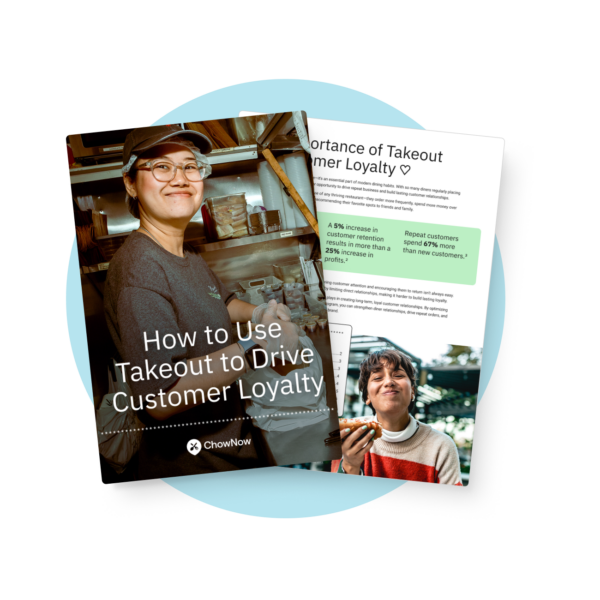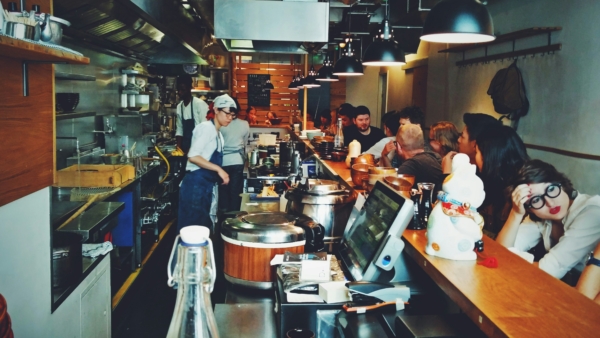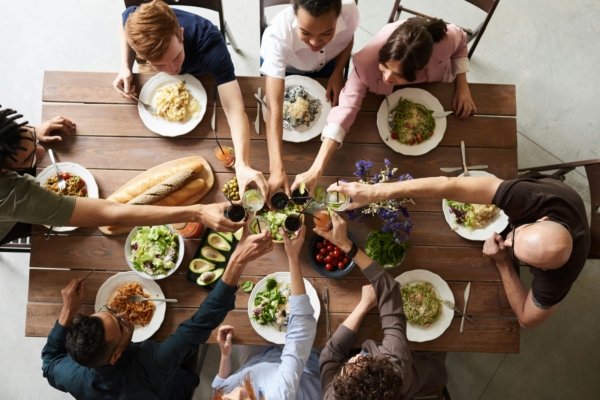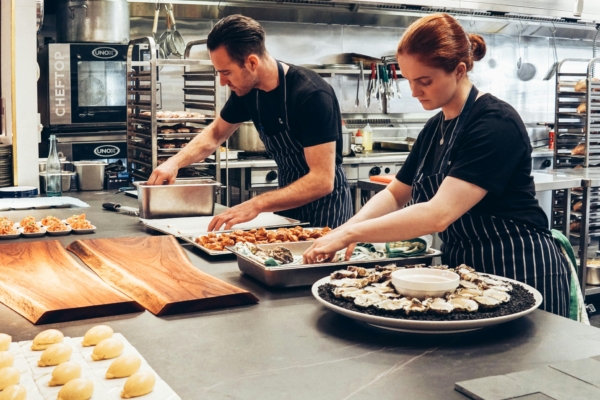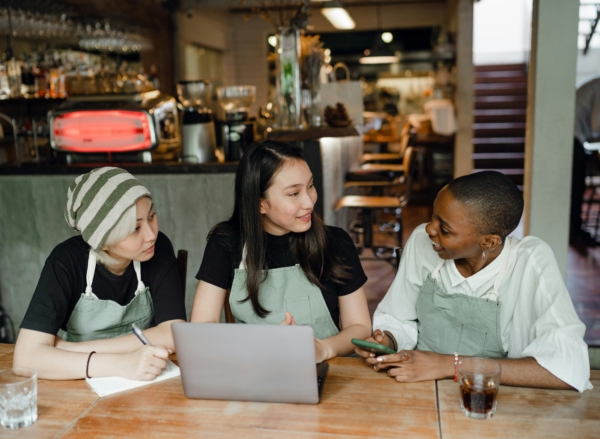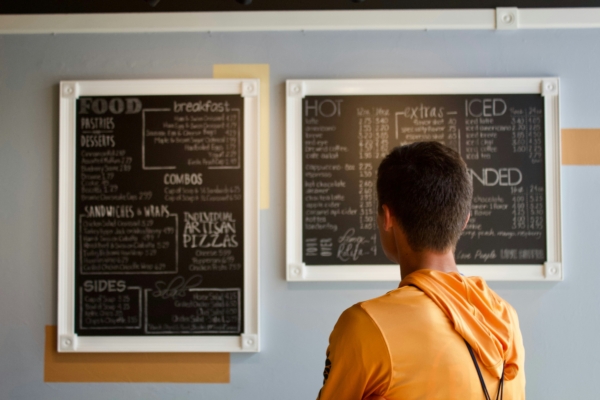7 Strategies To Increase Your Restaurant’s Average Order Volume (AOV)
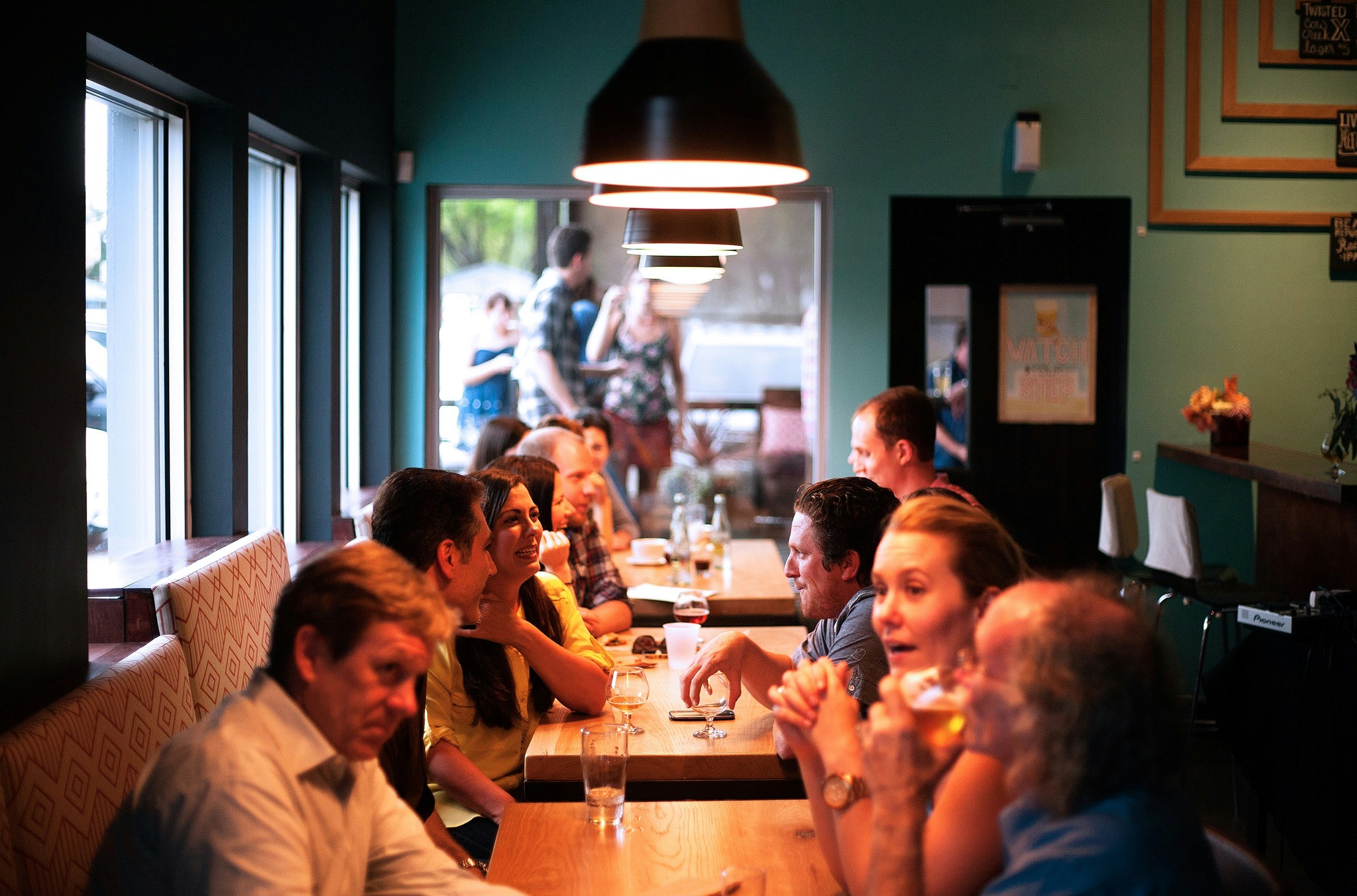
Many restaurant operators have misconceptions about average order volume (AOV) and how it works, making statements like:
“I need more customers to make more money.”
or
“Upselling feels awkward.”
or
“That sounds like something for big chains, not a small independent restaurant like mine.”
If any of this sounds familiar, please keep reading so you can discover how increasing your average order volume can transform your restaurant without the need for new customers or a corporate-level budget.
In fact, boosting AOV is one of the easiest and most effective ways to increase revenue while improving the customer experience for your guests.
In this article, you’ll learn simple, practical strategies to make it happen—no awkward upselling or overcomplicated tactics required.
What is AOV and How You Can Increase It
Average Order Volume (AOV) represents the average amount of money a customer spends per order at your restaurant—the more money customers spend every time they visit your restaurant or order online, the higher your AOV will be.
Finding your AOV is actually quite simple.
For example, let’s say you have 50 orders in a day that total $2,000 in revenue—all you need to do is divide the total revenue by how many orders you have for the day. In this case, that will be:
$2000 revenue ÷ 50 orders = $40 AOV
For the day, your AOV is $40—you can use this same math to identify your AOV on a monthly or yearly timeline.
Increase Your Restaurant’s Average Order Volume (AOV)
1. Train Staff How to Upsell Without Being Pushy
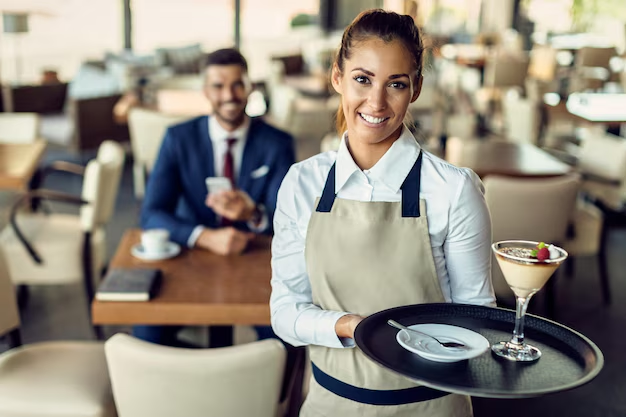
Upselling doesn’t have to be this awkward thing if you just frame it differently in your mind. Instead of thinking about it in terms of making more money, look at it as giving customers a better overall experience and providing opportunities to try new and better things.
Train your staff to see it the same way, and when done right, it feels less like a sales tactic and more like great hospitality. Encourage your team to think of themselves as guides, not salespeople.
Instead of asking, “Do you want an appetizer?” your staff could say, “Our house-made bruschetta is a guest favorite and pairs perfectly with the pasta—you’d love it.”
This approach feels like a suggestion, not a sales pitch, and helps customers discover menu items they might have otherwise missed.
When staff are trained to upsell with confidence and authenticity, it doesn’t just increase average order volume—it makes customers feel welcomed, valued, and excited to try something new.
Looking for a fun way to motivate your staff to upsell? Try a server game like Perfect Order. Have your servers save receipts for tables where they successfully upsold a complete meal, made up of a drink, appetizer, entrée, and dessert. At the end of the night, the server with the most perfect orders wins a prize!
2. Put Together Appealing Meal Bundles
Curated meal bundles are a great way to encourage customers to spend a little more while feeling like they’re getting a deal; plus, they make ordering easier for customers while increasing your restaurant’s AOV.
Here’s how it works:
Instead of pricing items individually, menus show a combined price that offers a slight discount compared to ordering each item separately. Our country’s most popular bundle is a burger, fries, and a drink.
Examples of meal bundles include:
- Family Packs: A meal package for four, including an entrée, sides, and drinks, encourages larger purchases. Example: “Family Taco Night – 12 tacos, 2 sides, and a dessert for $45.”
- Date Night Combos: A preset meal for two with a shared appetizer, two entrées, and a dessert. Example: “Date Night Special – 2 steaks, 1 appetizer, and a chocolate lava cake for $70.”
- Prix Fixe Menu: A multi-course meal at a set price encourages guests to order more while offering an elevated dining experience. Example: “Three-Course Chef’s Menu – Starter, entrée, and dessert for $50.” This is a great opportunity to upsell bottles of wine.
Why do bundles work?
They tap into pricing psychology—customers perceive greater value when multiple items are packaged together at a slightly discounted price. Instead of ordering à la carte, they see the bundle as a convenient, cost-effective option, even if they end up spending more than they originally intended.
By making these bundles visually appealing on menus and easy to order online, restaurants can create a win-win: customers feel like they’re getting a great deal, and your AOV increases naturally.
3. Leverage Time-Sensitive Offers and Specials
We’ve all felt the thrill of snagging a great deal just before time runs out—why not bring that same excitement to your guests?
Creating a sense of urgency with time-sensitive promotions and specials encourages customers to spend more in the moment, fearing they’ll miss out if they don’t act fast. These offers work particularly well in online ordering, where customers make decisions quickly.
A simple example is a “Spend $30, Get a Free Dessert” promotion, which encourages diners to increase their order size to hit the threshold.
Another strategy is offering happy hour-style discounts on certain items for a limited time, such as “Get a free appetizer with any entrée from 5–7 PM.”
The psychological principle behind these deals—scarcity and exclusivity—makes them feel special and valuable, influencing customers to buy more and increasing your restaurant’s AOV without feeling like a hard sell.
4. Make Add-Ons Easy When Ordering
Have you ever been to a tapas place where all the plates are in smaller portions, and the prices aren’t as high as full entrees? It’s inevitable you’ll always end up spending more money because each individual dish is so affordable.
The same works for add-ons, like proteins, drinks, and sides. These add-ons and upgrades total up quickly, raising your AOV in the process. The key is to make these add-ons feel seamless and appealing—whether in-person or through online ordering.
A well-designed menu naturally encourages customers to enhance their meals at key moments in the ordering process. For example, when ordering a burrito, a customer might see upgrade options like:
- “Add extra guacamole:$2.”
- “Add rice and beans: $3”
These built-in modifiers allow customers to customize their order while naturally increasing their spend.
With ChowNow’s commission-free online ordering, you can set up these modifiers to highlight profitable add-ons, ensuring customers have the option to upgrade their meal seamlessly—helping you increase AOV without losing a cut of your revenue.
5. Sell More, Showing Social Proof
People are more likely to order something when they see that other customers tried it already and loved it.
Humans are hardwired to mitigate risk, so by using social proof, you’re taking away the risk involved with customers ordering a high-value menu item.
One easy way to use social proof is by adding sections in your in-person or online menus highlighting items that are popular with customers or special recommendations. For example:
- “Most Popular” – Highlights top-selling dishes to build trust and encourage orders. Here’s an example from Cafe Vida’s commission-free online ordering website, showcasing their most popular items.
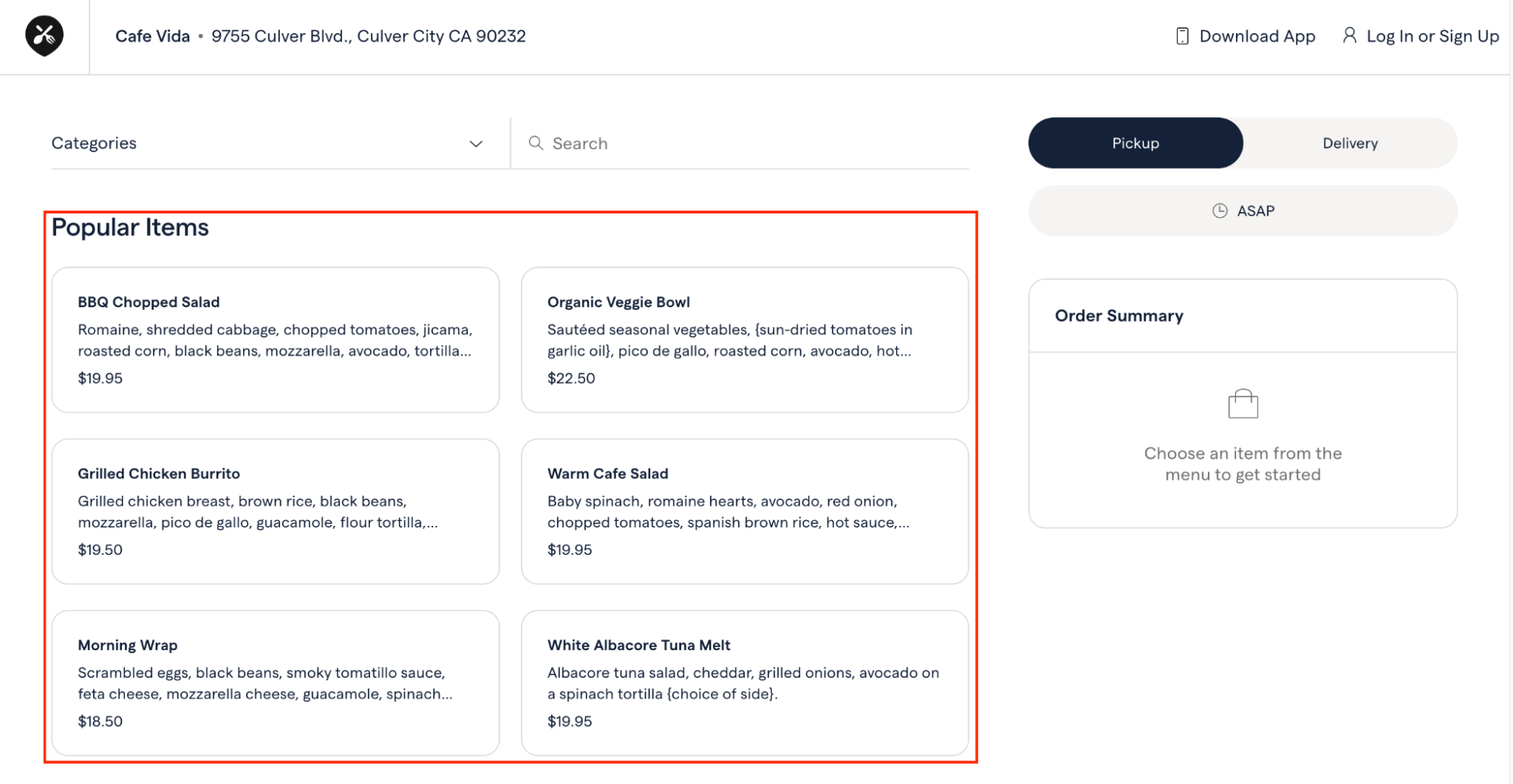
- “Chef’s Recommendation” – Creates a sense of exclusivity and authority around select items.
- “Customer Favorite” – Reinforces that a dish is well-loved by other diners.
People naturally gravitate toward what others enjoy, so featuring bestselling dishes or recommended pairings can lead to bigger check sizes.
Restaurants can also use social media to post pictures of their best-selling dishes, share customer testimonials, and feature user-generated content (such as diners tagging your restaurant in food posts) to create a buzz around a specific menu item.
6. Offering Loyalty Rewards for Larger Orders
Rewards programs aren’t just for gaining repeat visits—they can also incentivize higher spending per order. By rewarding customers for hitting certain spending thresholds, you give them an extra reason to add more to their order.
One effective way to encourage repeat orders is by offering a digital rewards program where customers earn incentives for their purchases. For example:
- “Collect a reward sticker for every order over $X” – Encourages customers to place larger orders to earn stickers faster.
- “Earn a free item after X qualifying orders” – Builds customer loyalty and increases repeat business.
ChowNow’s Rewards Program makes this process seamless by allowing restaurants to automatically track qualifying takeout orders and issue digital stickers. Customers can easily see their progress, making them more likely to order again to unlock their next reward.
7. Personalizing Recommendations with Customer Data
Personal recommendations increase the odds customers will spend more when they receive offers tailored to their preferences. There’s a growing demand for personalization, with a study showing that 71% of consumers expect it when interacting with a company.
You can add personalization by leveraging customer order history to tailor promotions and encourage repeat purchases. By understanding what customers love, you can create offers that feel more relevant and engaging.
For example, if you notice that a particular item is popular, you can promote it in marketing email campaigns to encourage more orders.
You can also take it a step further by offering exclusive deals to repeat customers. If a customer frequently orders a particular dish, you might send them a special offer like “Enjoy $2 off your next burger!” or “Try our new spicy mayo—perfect for your go-to order!”
This kind of targeted messaging makes customers feel seen and appreciated while encouraging loyalty and repeat business.
ChowNow allows restaurants to collect and access their own customer data through the ChowNow Dashboard, making it easier to understand purchasing trends and engage with customers in meaningful ways.
Be a Guide, Not a Salesperson
Increasing your restaurant’s average order volume doesn’t have to be complicated or feel like a sales gimmick, and it’s not about pressuring customers to spend more— it’s about providing value, enhancing the dining experience, and making it easy for them to order additional items they love.
Want to learn more about increasing your restaurant’s average order volume?
Contact ChowNow, and we’ll show you how owning your customer data and having a commission-free online ordering system are great ways to increase your AOV.
